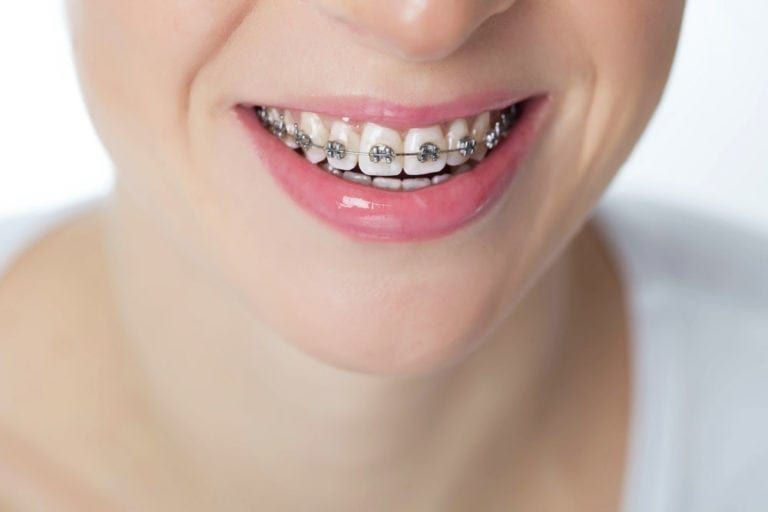Common Myths About Orthodontists You Shouldn’t Believe
- dclinicdubai
- Apr 23
- 4 min read
Orthodontic treatment is more accessible and advanced than ever, yet many misconceptions still shape people’s opinions. These myths can prevent individuals from seeking help, delaying care that could significantly improve both their appearance and oral health. Orthodontists in Dubai frequently encounter patients who are misinformed about what orthodontics involves, and debunking these myths is an important step in providing proper care and education.

Myth 1: Orthodontists Are Only for Kids and Teenagers:
A common belief is that orthodontists only treat children or adolescents, but this is far from the truth. Many adults seek orthodontic treatment to correct misalignment, improve oral health, or enhance their smiles. In fact, with the advent of discreet solutions like clear aligners, adult orthodontics has seen a major rise. Orthodontists are trained to treat patients of all ages, tailoring approaches based on individual needs and goals.
Myth 2: Braces Are the Only Option Orthodontists Offer:
While traditional metal braces are still highly effective, they are just one of many tools available. Orthodontists offer a wide range of treatments, including ceramic braces, lingual braces, and clear aligners. The choice of treatment depends on factors such as the complexity of the case, patient preference, and lifestyle. Today’s orthodontists focus on creating customized treatment plans that align with both functional needs and aesthetic desires.
Myth 3: Orthodontic Treatment Takes Years:
Another misconception is that all orthodontic treatments require multiple years to complete. While some complex cases may take longer, many patients begin to see results within months. The actual timeline depends on the severity of the issue and the type of treatment chosen. With the advancements in technology and techniques, orthodontists can now offer more efficient solutions with shorter treatment durations than ever before.
Myth 4: Orthodontists and Dentists Provide the Same Services:
Although both professions work with oral health, their training and expertise differ significantly. Dentists handle general dental care such as cleanings, fillings, and oral hygiene. Orthodontists, on the other hand, specialize in diagnosing and correcting misalignments of the teeth and jaw. Their additional training equips them with the knowledge to manage bite issues and complex dental irregularities that go beyond general dentistry.
Myth 5: Only People with Major Dental Issues Need Orthodontists:
Some people believe that orthodontic care is only necessary for severe dental problems. However, even minor misalignments or bite issues can cause long-term consequences if left untreated. These can include uneven tooth wear, speech difficulties, or jaw discomfort. Orthodontists in Dubai often work with patients who have mild concerns but want to prevent future complications and improve their overall dental function.
Myth 6: Orthodontic Treatment Is Just About Aesthetics:
While straighter teeth certainly enhance a person’s smile, the benefits of orthodontics extend far beyond appearance. Proper alignment promotes better oral hygiene, reduces the risk of tooth decay and gum disease, and improves the overall function of the mouth. Orthodontists prioritize the health and efficiency of your bite, ensuring that treatments serve both cosmetic and medical purposes.
Myth 7: Orthodontic Treatments Are Painful:
Modern orthodontics has come a long way in minimizing discomfort. The materials and techniques used today are designed to be as gentle and effective as possible. While some soreness may occur during initial adjustments, the pain is typically mild and temporary. Orthodontists take great care to ensure patients are comfortable throughout their treatment, offering advice and solutions for any discomfort.
Myth 8: You Can Go to Any Dentist for Orthodontic Care:
While some general dentists offer orthodontic services, they don’t have the same level of specialized training as orthodontists. It’s important to choose a certified orthodontist for treatments involving bite correction or tooth movement. Orthodontists in Dubai are trained to handle complex cases with precision, ensuring long-term success and minimizing the risk of relapse or complications.
Myth 9: You Can’t Eat Normally with Braces:
Many believe that braces come with strict dietary restrictions. While there are certain foods to avoid—like sticky candy or hard nuts—patients can still enjoy a wide range of meals. Orthodontists provide detailed dietary guidance that helps patients protect their braces without sacrificing nutritional needs. With a little adjustment and awareness, eating with braces becomes second nature.
Myth 10: Orthodontic Care Is Too Expensive:
Cost is often cited as a barrier to orthodontic treatment. However, many clinics now offer flexible payment plans, financing options, and insurance coordination to make care more affordable. Orthodontists understand the importance of budget-friendly solutions and strive to make treatment accessible. In cities like Dubai, competitive pricing and high standards of care mean patients can find quality treatment options within various price ranges.
Final Thoughts:
Misinformation often holds people back from pursuing the care they need. By debunking these common myths, it becomes clear that orthodontic treatment is more versatile, effective, and accessible than ever. Orthodontists in Dubai combine scientific expertise with cutting-edge technology to create healthier, more confident smiles. Whether you're considering braces or simply want to consult about alignment concerns, it’s never too late to benefit from professional orthodontic care.


Comments